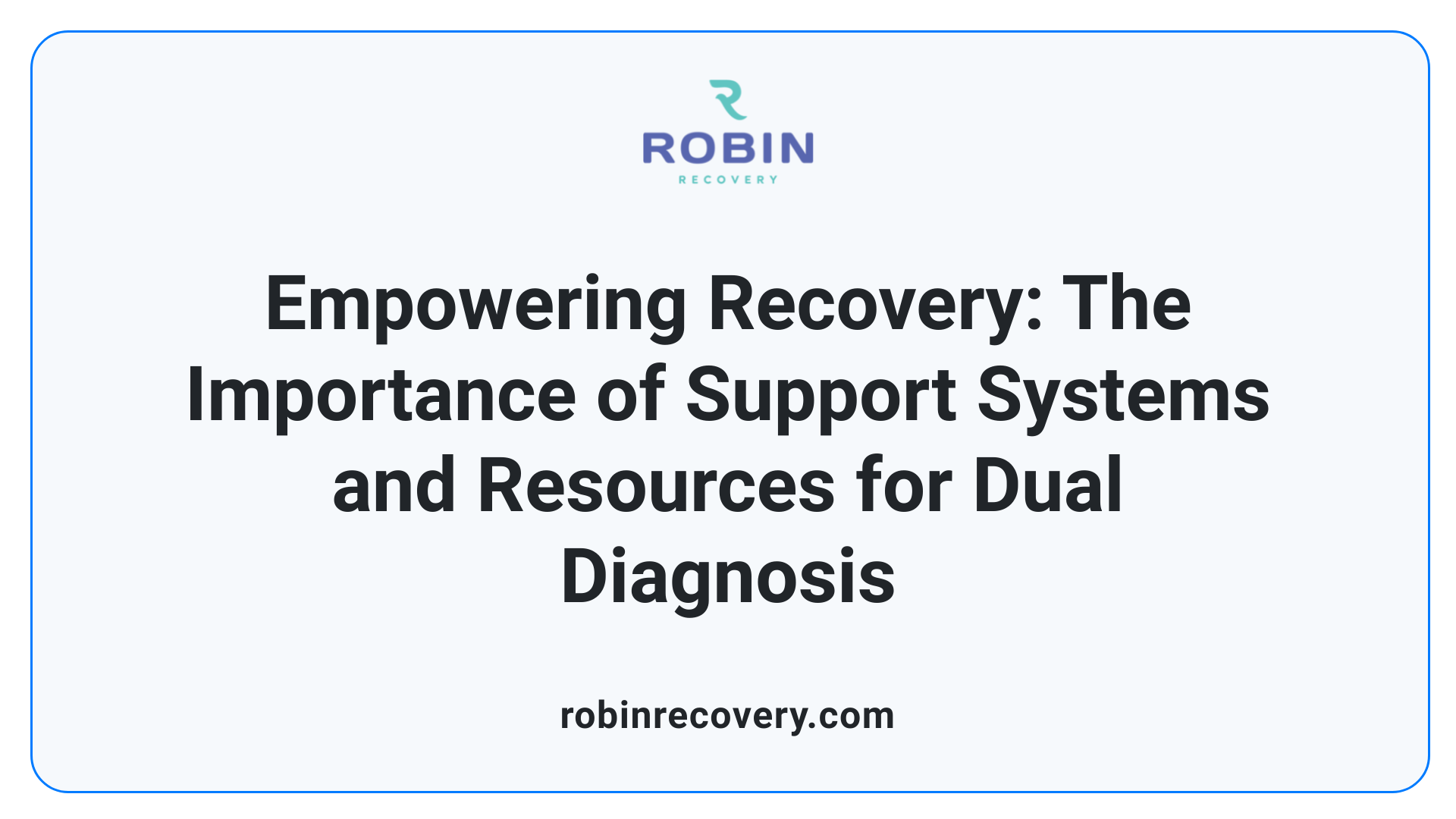What Is Dual Diagnosis Treatment?

Understanding Dual Diagnosis
Dual diagnosis, also known as co-occurring disorders, is a complex and increasingly recognized condition where an individual simultaneously suffers from both a mental health disorder and a substance use disorder (SUD). This intersection poses unique challenges for treatment as each disorder can exacerbate the other. Understanding dual diagnosis is crucial given its high prevalence and the complex interplay between mental health and substance use issues. This article delves into the nature of dual diagnosis, its symptoms, challenges, and the integrated treatment models designed to address it effectively.
The Nature of Dual Diagnosis

What is dual diagnosis in mental health?
Dual diagnosis refers to the condition where an individual experiences both a mental health disorder and a substance use disorder (SUD) simultaneously. This dual occurrence complicates treatment, as each disorder can exacerbate the symptoms of the other. For example, a person with depression may turn to alcohol as a means to cope, while alcoholism could deepen feelings of hopelessness and despair, creating a challenging cycle. To achieve better recovery outcomes, effective treatment strategies often involve integrated approaches that utilize behavioral therapies, medication, and support networks to concurrently address both issues. Understanding this interplay is vital, especially given that approximately 50% of individuals with a mental health disorder also experience a substance use problem, underscoring the prevalence of dual diagnosis.
What are examples of dual diagnosis?
Examples of dual diagnosis can manifest in various combinations, such as:
- Depression with Alcoholism: Individuals may use alcohol to numb emotional pain.
- Bipolar Disorder with Methamphetamine Addiction: Substance use can trigger manic episodes.
- Anxiety Disorders with Cocaine Addiction: Users might seek temporary relief from anxiety symptoms.
- Opioid Addiction alongside PTSD: Abusing opioids can temporarily alleviate trauma-related distress.
- Alcohol Use Disorder with Generalized Anxiety Disorder: Alcohol may be used to manage constant anxiety.
Despite their commonality, these combinations of disorders highlight the complexity involved in treatment. Risk factors like trauma, stress, and genetic predispositions often play a role in the development of both mental health and substance use issues. Effective treatment plans should thus adopt an integrated approach for the best chance at recovery.
Symptoms and Risk Factors of Dual Diagnosis

What are the common symptoms and risk factors of dual diagnosis?
Common symptoms of dual diagnosis encompass a range of emotional, behavioral, and psychological changes. Individuals often exhibit erratic behavior, irritability, and emotional instability. Other noticeable changes include:
- Extreme mood swings: Frequent highs and lows can create challenges in relationships and daily functioning.
- Withdrawal from social interactions: People may isolate themselves from friends and family, impacting their support systems.
- Difficulty concentrating: This can affect work performance or academic success.
- Substance-related symptoms: These may include loss of control over substance use, increased tolerance, and engagement in risky behaviors.
Recognizing these symptoms is essential for early intervention.
Risk factors contributing to dual diagnosis are significant and varied. They include:
- Genetics: A family history of mental illness or substance abuse can heighten an individual's risk.
- Childhood trauma: Experiences of abuse or neglect can lead to both mental health disorders and substance use issues.
- Environmental stressors: High levels of stress and unstable living conditions can exacerbate problems.
- Self-medication tendencies: Individuals may turn to substances as a coping mechanism for mental health symptoms, resulting in a cyclical relationship between their disorders.
Without appropriate treatment, these conditions can significantly erode physical and psychological health, leading to deeper issues in personal and financial stability.
Challenges and Risks in Treating Dual Diagnosis

What are the risks and challenges associated with dual diagnosis?
Dual diagnosis involves the simultaneous presence of a mental health disorder and a substance use disorder. In the U.S., it affects approximately 9.2 million adults, presenting unique challenges.
Complexity of Treatment
The treatment of dual diagnosis is inherently complex due to the intertwining of mental health and substance use disorders. Common challenges include:
- Poor Medication Compliance: Individuals may struggle to adhere to treatment regimens due to the effects of both disorders.
- Physical Health Issues: Increased risks of conditions such as liver disease due to substance misuse are prevalent.
- Emotional Instability: The combination of mental and substance use disorders heightens the risk of violence and suicide.
Risks of Untreated Dual Diagnosis
When dual diagnosis remains untreated, individuals face:
- Worsening Symptoms: Both mental health problems and substance abuse can become more severe without integrated treatment.
- Cycle of Addiction: The lack of intervention fosters a continuous cycle between mental distress and substance use, complicating recovery efforts.
- Diminished Quality of Life: Failure to address these issues can lead to significant disruptions in personal and social functioning.
Thus, effective care requires comprehensive, integrated approaches that tackle both conditions simultaneously.
Integrated Treatment Approaches

What is the treatment model for dual diagnosis?
The treatment model for dual diagnosis is Integrated Dual Disorder Treatment (IDDT), which effectively addresses both mental illness and substance abuse through a holistic approach. This evidence-based practice incorporates medication, psychological, educational, and social interventions tailored to the individual's needs. IDDT recognizes that individuals suffering from dual diagnoses benefit from a coordinated treatment strategy that encompasses multiple disciplines.
Importance of collaborative efforts
The integration of care is crucial for treating individuals with co-occurring disorders. Multidisciplinary teams, comprising psychiatrists, therapists, and addiction counselors, work together to design personalized treatment plans. This collaboration is essential to ensure that both mental health and substance use issues are addressed simultaneously, improving overall recovery outcomes.
In addition to IDDT, Assertive Community Treatment (ACT) is an effective strategy, providing intensive individual support that spans various life domains, including housing and employment. Resources like Treatment Implementation Protocols (TIPs) guide practitioners in managing co-occurring disorders, enhancing the delivery of integrated care.
Ultimately, the goal of integrated treatment for dual diagnosis is to foster comprehensive recovery by acknowledging the complex interplay between mental health and substance use, enabling patients to achieve better long-term outcomes.
Treatment Model Key Components Collaboration Level Integrated Dual Disorder Treatment (IDDT) Holistic approach, medication management, psychosocial support Multidisciplinary team Assertive Community Treatment (ACT) Intensive support, focus on housing and employment High collaboration
Connections and Distinctions Within Dual Diagnosis
Understanding the linkage between mental health and substance use
The relationship between mental health and substance use is intricate, often leading to a reciprocal interaction. Many individuals misuse substances to self-medicate their mental health challenges, which can lead to dependence and further exacerbate their underlying conditions. Approximately 50% of people with severe mental disorders will also encounter substance use issues during their lifetime, underscoring this connection.
Distinctions between dual diagnosis and co-occurring disorders
What distinguishes dual diagnosis from co-occurring disorders?
Dual diagnosis focuses specifically on the simultaneous existence of a mental health disorder and a substance use disorder in an individual. In contrast, co-occurring disorders can encompass any combination of multiple conditions, not limited to psychiatric and substance-related issues. While both are crucial for effective treatment, recognizing these distinctions is essential for tailoring interventions to improve recovery outcomes. Integrated treatment approaches are vital for both frameworks, addressing the interplay between disorders to ensure holistic care.
Support Systems and Resources for Recovery

Role of Psychosocial Interventions
Psychosocial interventions play a vital role in the recovery process for individuals facing dual diagnosis. These interventions often incorporate various therapeutic approaches aimed at addressing both mental health and substance use issues. For instance, Integrated Group Therapy (IGT) combines traditional addiction therapies with mental health treatment, emphasizing group support and adherence to medication.
Another effective model is Early Recovery Adherence Therapy (ERAT), which merges motivational interviewing techniques with strategies for managing both bipolar disorder and substance use. Such approaches facilitate better coping mechanisms and enable participants to focus on enhancing their interpersonal relationships, ultimately fostering a supportive recovery environment.
Community and Family Support
In addition to formal interventions, support from family and community is crucial. Family members can provide emotional support, which is essential for recovery. Community resources, including local support groups such as Double Trouble in Recovery (DTR), offer an opportunity for individuals to connect with others facing similar struggles. These groups emphasize shared experiences in managing both psychiatric and substance use disorders, creating a strong network of support.
Furthermore, community health services often provide resources tailored for dual diagnosis, such as hotlines, information sessions, and care referrals. Engaging with both community and family networks can significantly enhance recovery outcomes, providing a sense of belonging and reducing feelings of isolation.
The Path to Recovery
Understanding and treating dual diagnosis is crucial given its prevalence and complexity. The intertwined nature of mental health disorders and substance use disorders requires a comprehensive, integrated approach that addresses both issues simultaneously. With proper treatment models and support systems, individuals experiencing dual diagnosis can achieve better recovery outcomes and improved quality of life. Ongoing research and education are essential to continue evolving treatment strategies, ensuring that holistic and effective care is available for those in need. Acknowledging the challenges and complexities of dual diagnosis, while emphasizing the importance of integrated interventions, sets the foundation for successful recovery.
References
- Dual Diagnosis - MedlinePlus
- Understanding Dual Diagnosis | NAMI
- Understanding dual diagnosis - Alcohol and Drug Foundation
- Dual Diagnosis - NAMI California
- Deal with a Dual Diagnosis: Substance Abuse & Mental Health
- 5 Things to Know About Dual Diagnosis Treatment - Holly Hill Hospital
- Dual Diagnosis: Mental Health And Addiction
- Dual Diagnosis vs. Addiction Treatment | Skyland Trail
- Dual Diagnosis: Causes, Diagnosis, and Treatment - Verywell Mind
